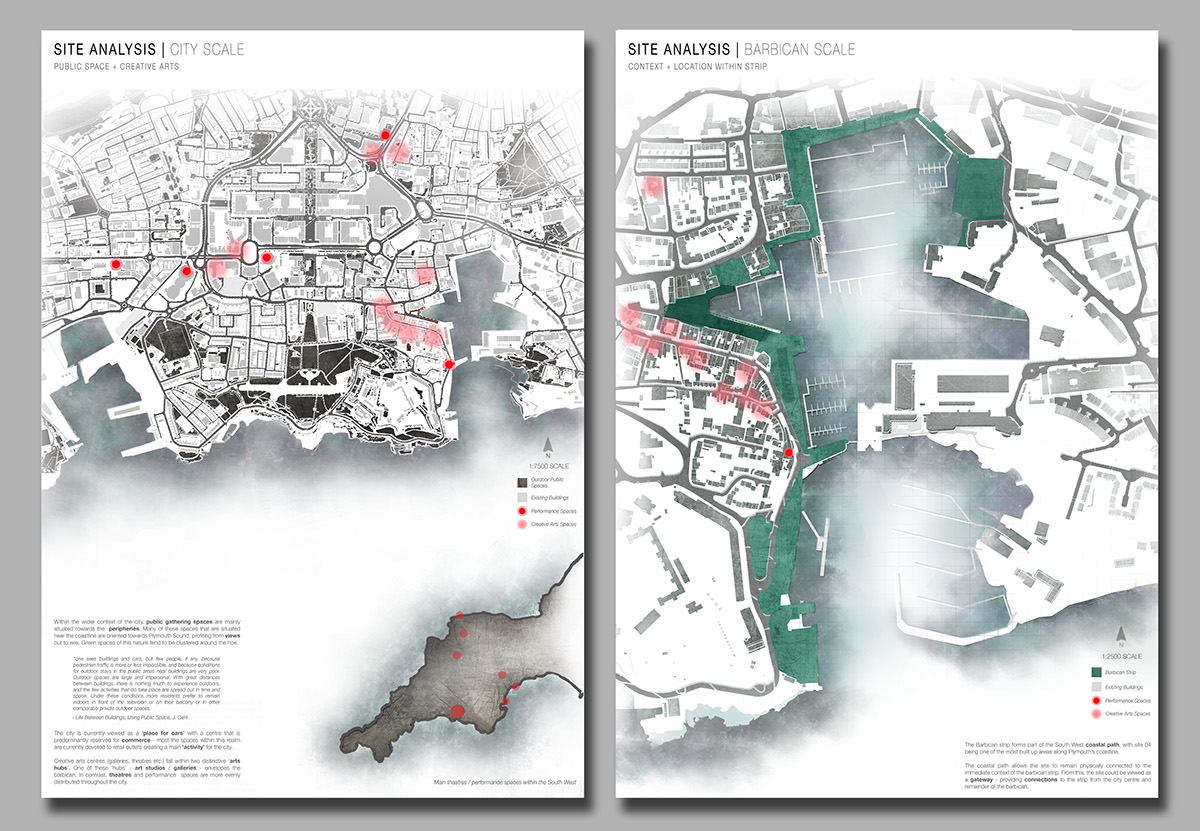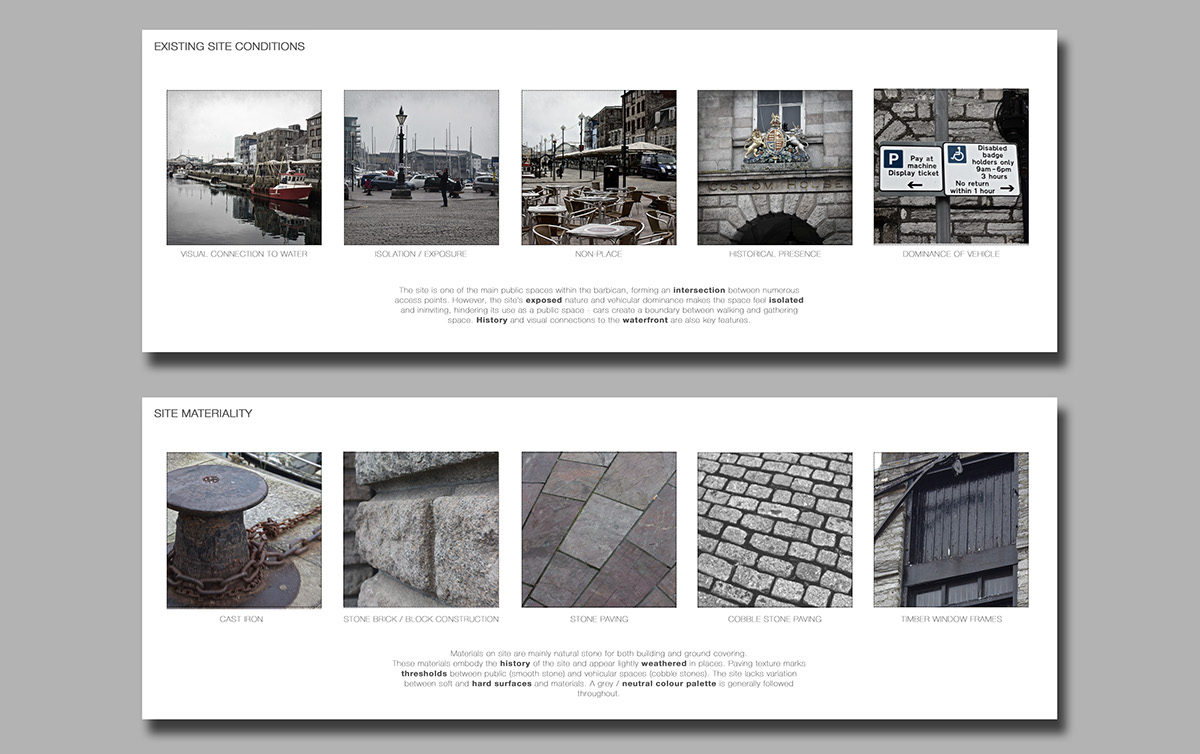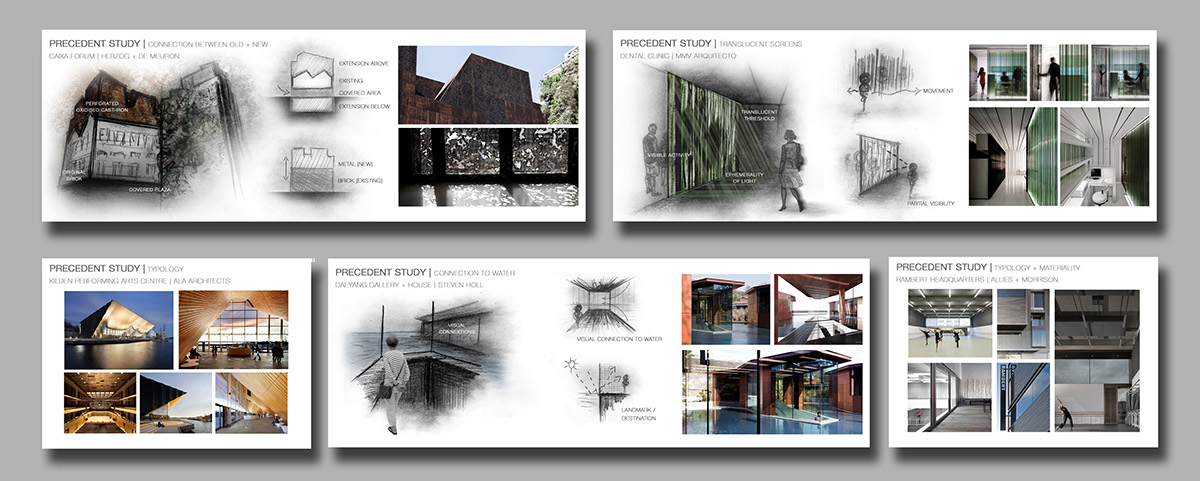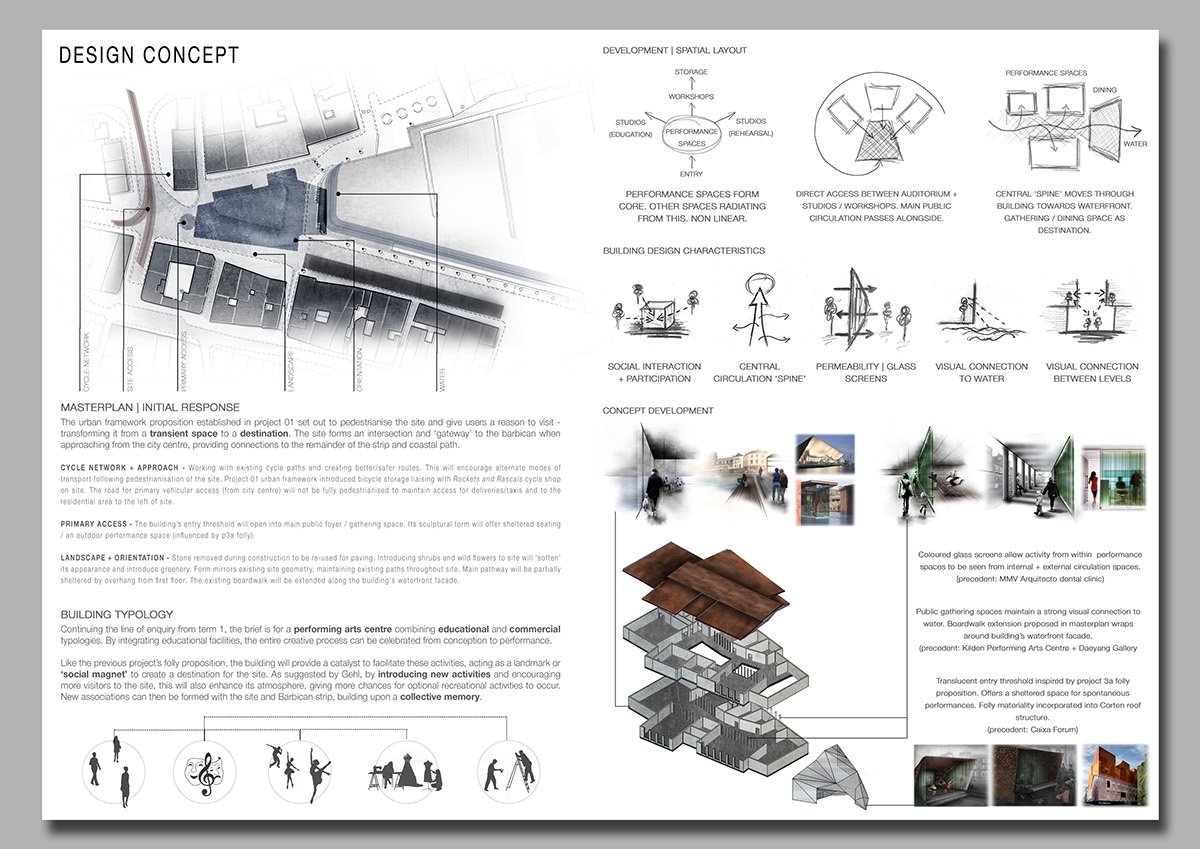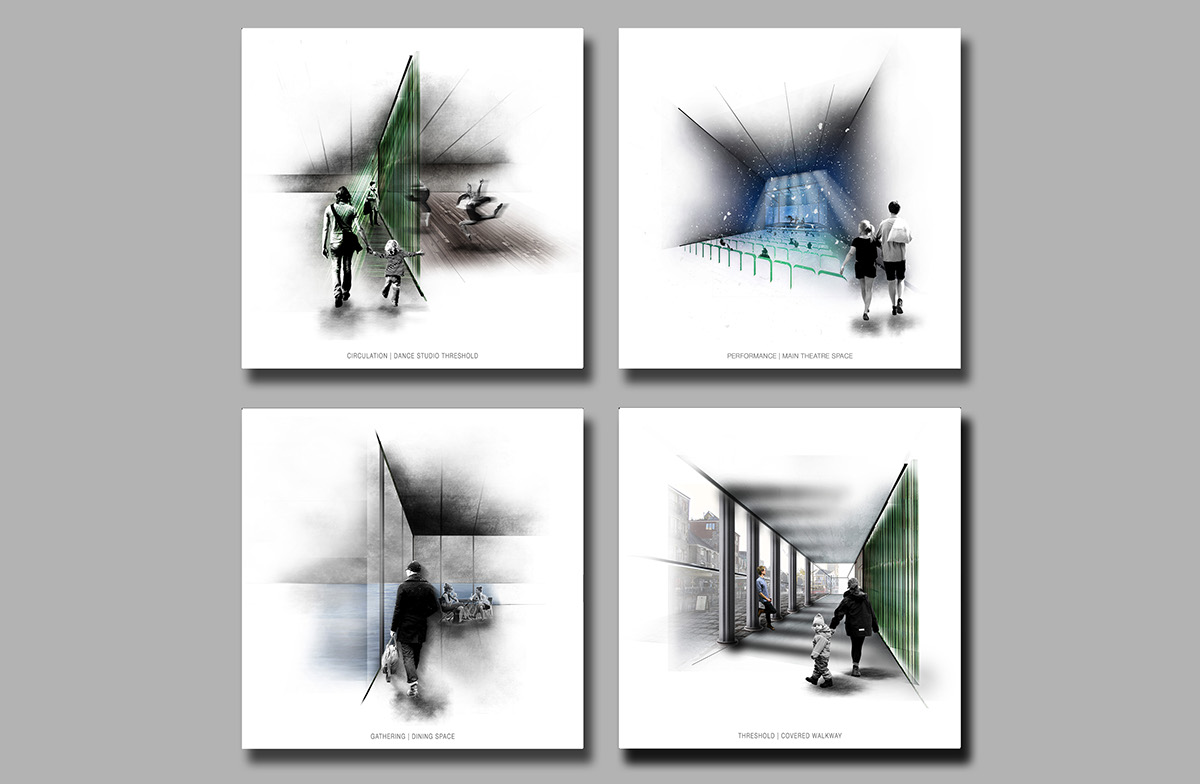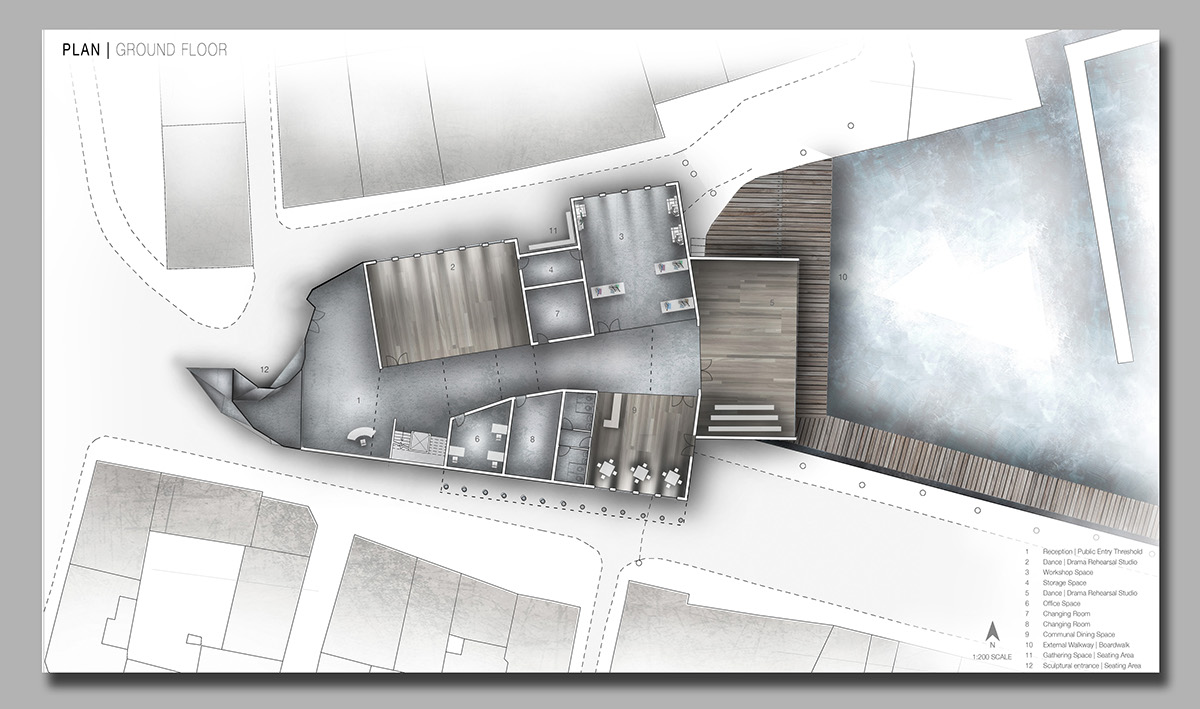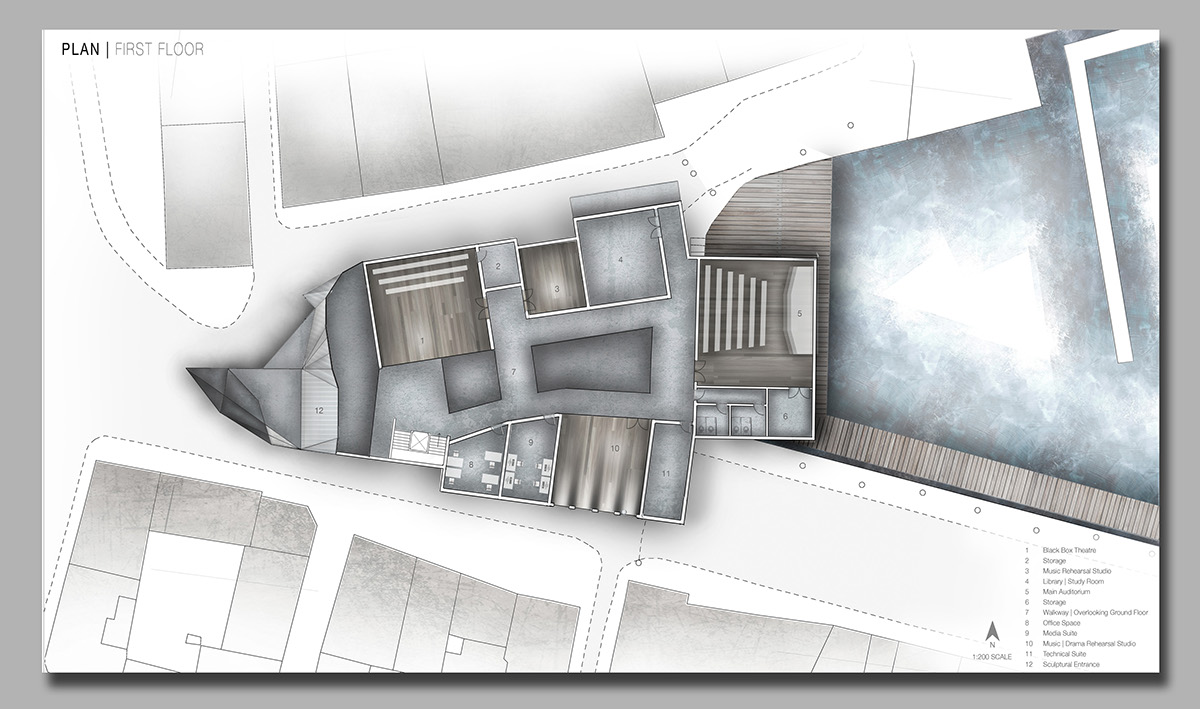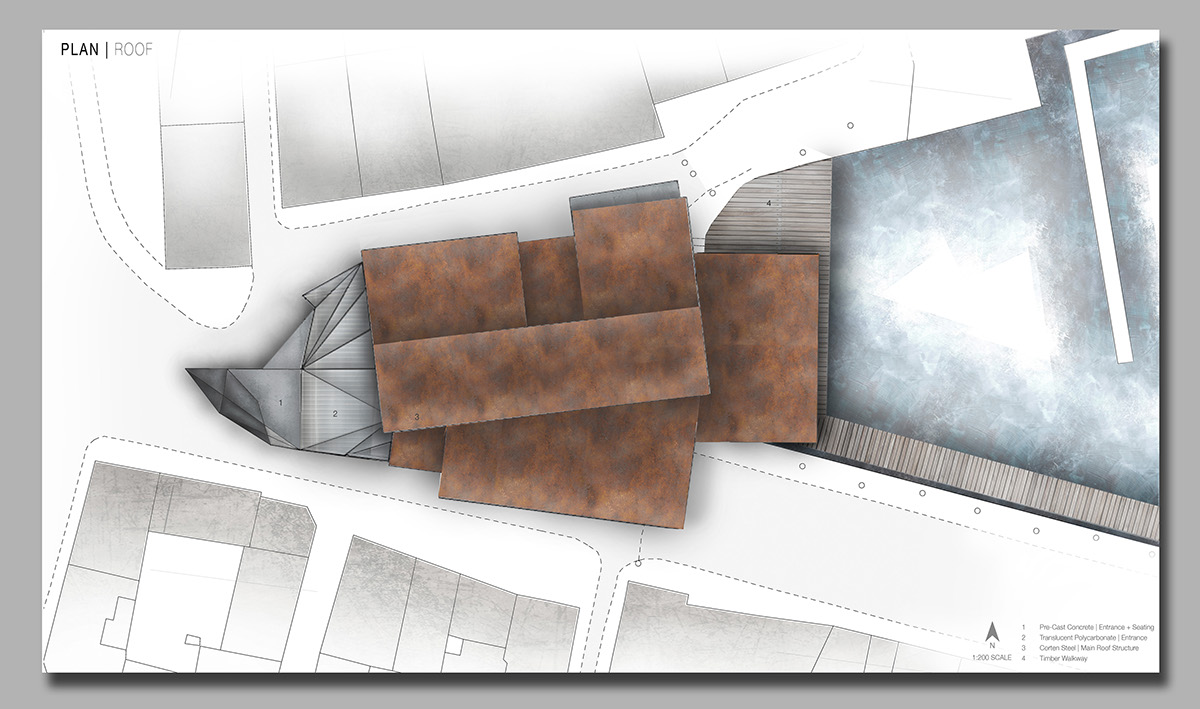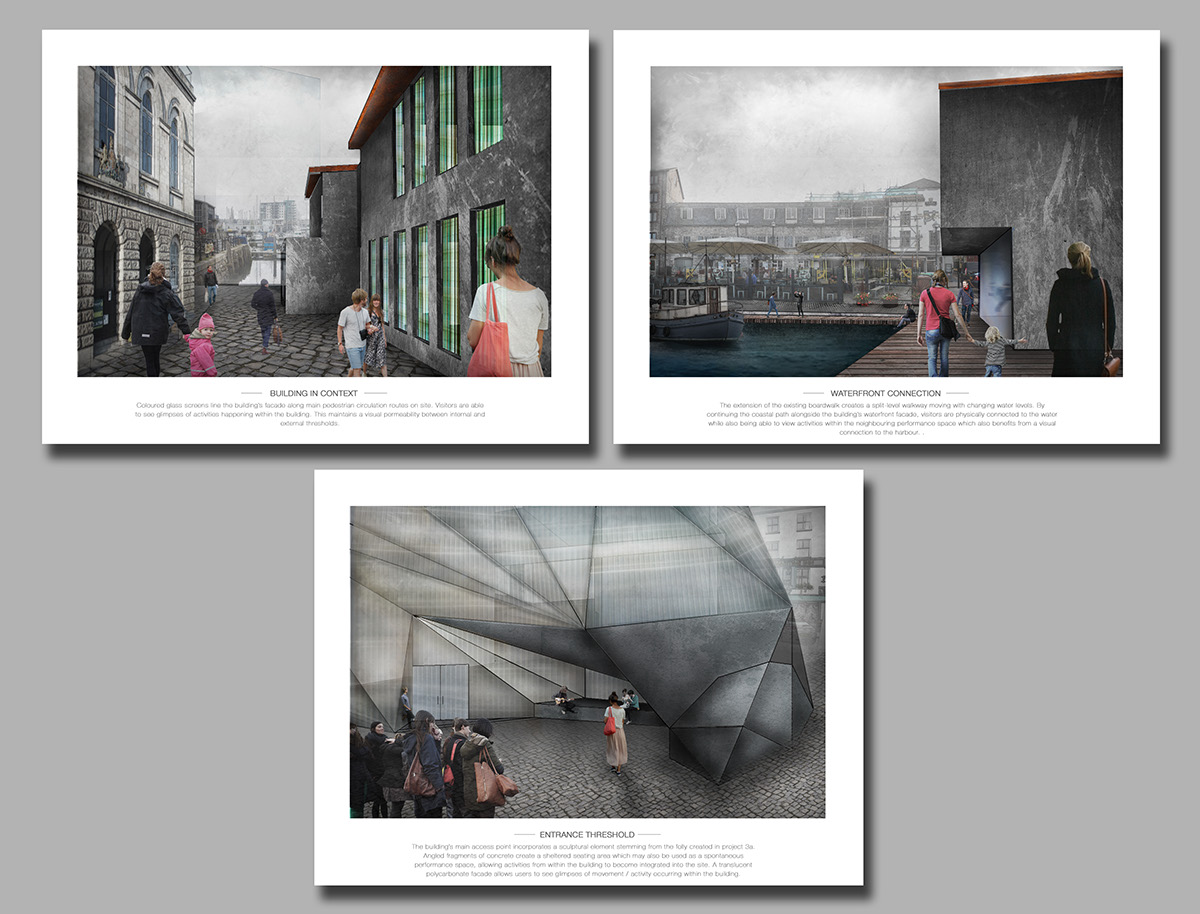
Within the barbican, the site is situated in the north western area of the strip and considered one of its main public spaces. Rich in history, the site once held a greater role in the local economy as a thriving marketplace for goods entering Sutton Harbour via boat. Today, the site holds little significance as a public space, instead appearing disconnected from its immediate context and the city centre. Like much of Plymouth’s centre, vehicles dominate the site - its central public space is often bounded by parked cars and taxis. When analysing existing site qualities, this stood out as one of the main aspects hindering users from comfortably inhabiting the site. Therefore, much of the site itself is currently a non-place with no apparent use or function. Visitors currently use the space as a junction between paths or a means of reaching another location whether passing through on foot or using parking facilities. Aside from this, waterfront dining areas were found to be the most functional aspect of the site.
The project brief is for a performing arts centre. To provide a facility for creative and performing arts, the building will combine educational and commercial typologies. Through the integration of performance spaces and educational workshops and studios, the entire creative process can be celebrated from conception to performance. Other facilities will be included to support these studios and performance spaces, such as technical / media suites and a public dining space which will bring additional revenue to the scheme. As well as facilitating these activities, the performing arts centre will act as a landmark to create a destination for the barbican in a similar manner to the folly proposed in the previous project. As the site forms a junction between paths, the building’s presence as a landmark will be strengthened.
“Location at a Junction involving path decisions strengthens a landmark [...] The activity associated with an element may also make it a landmark [...] Once a history, a sign, or a meaning is attached to an object, its value as a landmark rises” [1]
By introducing new activities and encouraging more visitors to the site, this will also enhance its atmosphere - giving more chances for optional recreational activities to occur.[2] By introducing new activities, new associations can then be formed with the site and Barbican strip, re-establishing and building upon a collective memory of the urban environment.
“One can say that the city itself is the collective memory of its people, and like memory it is associated with objects and places. The city is the locus of the collective memory” [3]
The performing arts centre will aim to encourage social activity, with themes of collaboration and participation being central to the proposition.
By giving members of the public a reason to visit the site a collective memory can therefore be re-established; giving new meaning to a space which would otherwise remain a non-place.
______
[1] K. Lynch. ‘The Image of the City’ (Boston: The MIT Press, 1962). p.81
[2] J. Gehl. ‘Life Between Buildings: Using Public Space’ (Washington: Island Press, 2011)
[3[ A. Rossi. ‘The Architecture of the City’ (Cambridge: The MIT Press, 1982). p.130
[2] J. Gehl. ‘Life Between Buildings: Using Public Space’ (Washington: Island Press, 2011)
[3[ A. Rossi. ‘The Architecture of the City’ (Cambridge: The MIT Press, 1982). p.130
